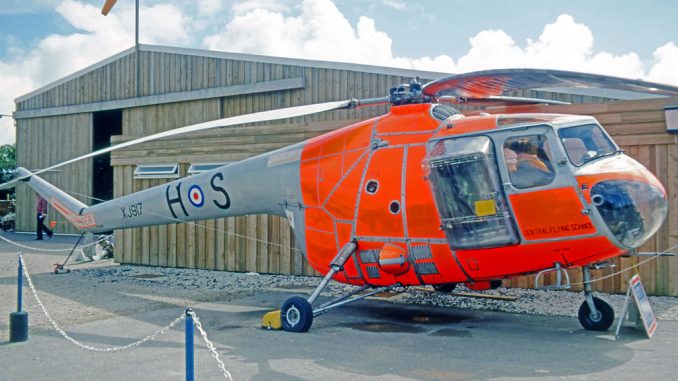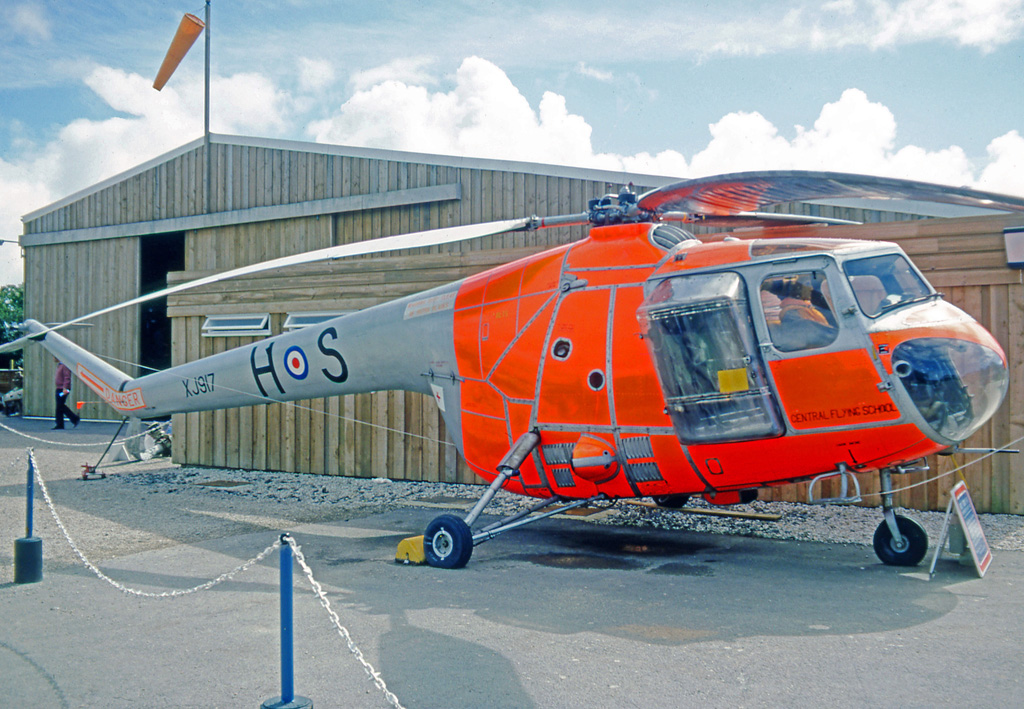

The Royal Air Force Museum has transferred its spare Bristol Sycamore HR.14, serial XL824, to the Bristol Aerospace Center in Filton, England. The Bristol Sycamore was the first British-designed helicopter to serve with the Royal Air Force. The type first flew in 1947 and served predominantly on search and rescue and anti-submarine warfare duties, although it did pioneer some of the front line roles later proven to great effect by the US military in the Viet Nam War.
The Sycamore entered service with RAF 275 Squadron in April 1953, and went on to serve with nine squadrons in total. It played a vital role during the Malayan Emergency (1948-1960) deploying Army foot patrols into the jungle. The Royal Air Force Central Flying School also used the type for pilot training. The Sycamore also served in the West German, Australian and Belgian military services. The civilian version, the Bristol 171, also served in a number of airlines both in the UK and abroad.
XL824 had an active military career. It entered the RAF in March, 1957 initially going into storage and maintenance units before joining 284 Squadron on deployment in Nocosia, Cyprus during the Cyprus Emergency in January, 1958. As the RAF service history for XL824 states, “the squadron was involved in internal security duties supporting ground forces in anti – EOKA terrorist patrols and troop drops, often in mountainous terrain, in addition to communications and rescue duties. The Sycamores were flown without baggage or cabin doors, to save weight and permit rapid deployment from both sides when landed or one side if a rope descent was made. The emergency continued until the political settlement of March 1959.After this training, VIP, ambulance and SAR duties continued.
284 Squadron became 103 Squadron in August, 1959, but stayed in Nicosia and XL824 continued with the unit’s Search and Rescue duties. 103 Squadron served on detachment in the search and rescue Flight at El Adem, Libya beginning in June 1959. “Five aircraft were based at Nicosia and two with the El Adem detachment as C Flight, these aircraft spending much time looking for vehicles lost in the Libyan desert, in addition to routine training and communications flights. Because of the internal security requirement in Cyprus the squadron had a dual role, maintaining a standby for the local army commander to move troops to ambush positions or to set up roadblocks. Many mercy flights were made to the scene of accidents, aircraft crashes and sea rescues in the area, in addition to courier and VIP flying photo recce and ‘Father Christmas’ trips to Kyenia orphans home and Morphou deaf school.”
XL824 returned to Nicosia in July, 1963, but 103 Squadron was soon split into several flights, 1563 and 1564, while 103 Squadron reformed in Singapore to take part in the ongoing Borneo Emergency. XL824 moved between flights as needed over the following two years, working in the Mediterranean Theatre, before returning to the UK in May, 1965. The RAF put her up for disposal in June, 1965, and she went on loan to Westland Aircraft later that year, before returning to RAF service with the Central Flying School at RAF Turnhill in March, 1966. Here the helicopter performed the ab initio role in giving future helicopter pilots for all three British military branches their first experiences flying rotary wing aircraft, leading in to the Westland Whirlwind front-line types. This didn’t last long for XL824 as she was in storage by August 1966, and joined the RAF Museum collection in early 1968. She went on loan to the Manchester Air & Space Museum (now the Museum of Science and Industry) in Manchester, England for public display between 1982 and 2008. Since 2008, XL824 has been in the RAFM storage facility at MoD Stafford.
Ian Thirsk, Head of Collections RAF Museum: “We are very happy for the team at the Bristol Aerospace Centre and cannot think of a more appropriate recipient for the Sycamore. As a new organisation celebrating the UK’s rich aviation heritage we would also like to wish them the best of luck and look forward to working together in the future.”
Lloyd Burnell, Project Director at Bristol Aero Collection Trust, said “We are delighted that the RAF Museum has elected to gift its Bristol Sycamore HR.14 to the Bristol Aerospace Centre, which will provide a fitting home for the helicopter as part of our extensive collection of Bristol aerospace products.The Bristol Aerospace Centre is a new £16 million industrial museum and learning centre at Filton, one of the birthplaces of the UK industry, and is due to open in Spring 2017. We already have significant financial backing from corporate and other partners and were recently awarded a £4.7 million grant by the Heritage Lottery Fund. We look forward to continuing to build upon our strong relationships with the RAF Museum as we deliver the project”
WarbirdsNews wishes to thank the RAF Museum for their help with this article.


Be the first to comment
Graphic Design, Branding and Aviation Art